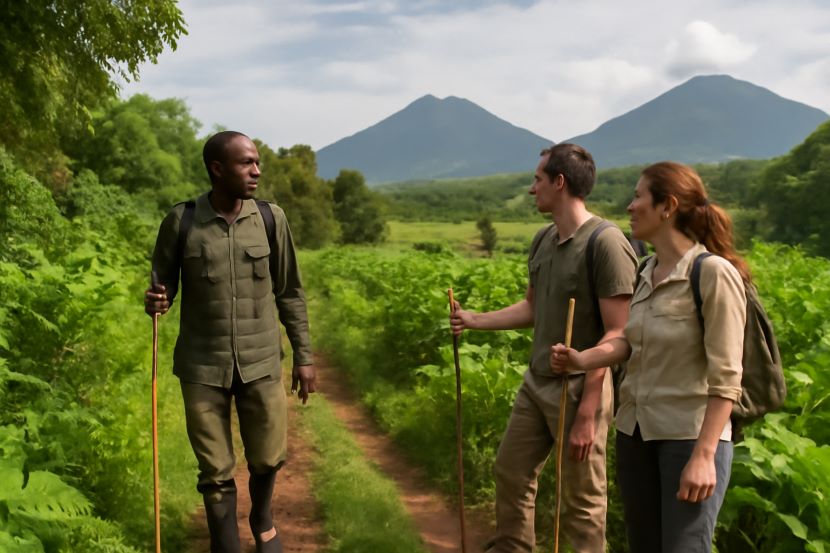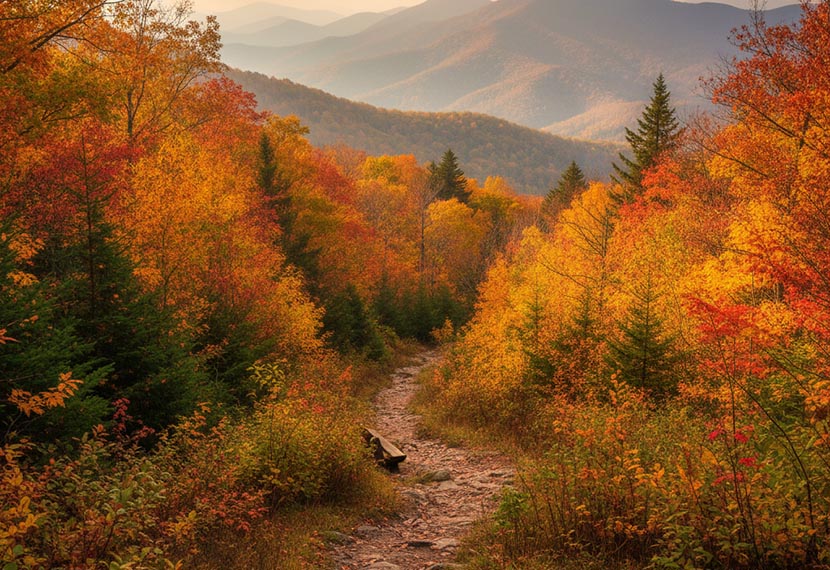
Arizona Joins California, Utah, Wyoming, Montana, Idaho, Colorado and Other US States as American National Parks Drastically Increase International Visitors New Entry Fee, Just Few Days After Federal Shutdown Closure, This will Hammer Tourism Sector Once More

Arizona has officially joined the ranks of states like California, Utah, Wyoming, Montana, Idaho, Colorado, and several others as American National Parks implement drastic increases to the entry fees for international visitors. This decision comes just a few days after the federal shutdown closure shook the tourism sector. The new fee structure will undoubtedly hammer the tourism sector once more, making it significantly harder for foreign tourists to enjoy the beauty of America’s most iconic national parks.
Arizona’s national parks, along with those in states like California and Wyoming, are now slapping international visitors with skyrocketing entry fees, pushing the cost of exploring these national treasures to unprecedented levels. These changes, already making waves across the tourism industry, are expected to impact the number of visitors significantly. The sudden fee hikes in states like Montana and Colorado are just the beginning, raising concerns about the long-term effects on international tourism. The timing, so close to the federal shutdown, further complicates the situation, as the already struggling tourism sector faces yet another blow.
Travel and Tour World urges readers to continue reading this story to uncover the full impact of these fee hikes and how they might reshape the future of national park tourism in the U.S.
News In Brief:
- Starting January 1, 2026, foreign visitors (non-residents) will face significant fee increases for U.S. National Parks.
- The cost of an annual pass for non-residents will rise to $250, compared to $80 for U.S. residents.
- Non-residents without an annual pass will pay a $100 surcharge per person at 11 of the most popular national parks, including Yellowstone, Yosemite, and the Grand Canyon.
- The fee changes aim to ensure that U.S. taxpayers, who already fund the National Park System, receive the greatest benefit and that international visitors contribute fairly to park maintenance.
- The new policy is in response to issues like vandalism and lack of park staff during past government shutdowns.
- U.S. residents will benefit from patriotic fee-free days, allowing them to visit the parks for free on certain holidays.
- A new digital “America the Beautiful” pass will replace the physical version for both residents and non-residents, making park access more convenient.
- The $250 pass applies to 11 popular parks, with additional $100 per-person surcharge at these locations.
- The price hike is controversial, with critics arguing that it unfairly targets foreign tourists and could decrease international tourism to U.S. national parks.
- The new fees are part of a broader initiative to preserve and protect the parks by generating more revenue for maintenance and repairs.

US National Parks’ New Entry Fee Policies: A Drastic Increase for Foreign Visitors Starting January 2026
In a move that will undoubtedly spark debate, the U.S. Department for the Interior has unveiled a set of new entry fee policies for the nation’s cherished national parks, set to come into effect on January 1, 2026. The most significant change is the dramatic increase in fees for foreign visitors, raising questions about accessibility, fairness, and the true motivations behind these policy shifts. With these new fees, foreign visitors to national parks will face a sharp rise in the cost of enjoying the country’s natural wonders. While the policy aims to balance the interests of U.S. taxpayers and international tourists, it also shines a spotlight on ongoing issues related to park maintenance and the fiscal responsibilities that come with preserving these iconic locations.
| National Park | Extra Fee for Non‑Residents (2026) / Annual Pass Cost | What Changed / Notes |
|---|---|---|
| Grand Canyon National Park (Arizona) | + US$100 surcharge (day‑entry) or non‑resident annual pass: US$250 | Non‑residents must pay extra; US residents still pay US$80 for annual pass. |
| Yellowstone National Park (Wyoming / Montana / Idaho) | + US$100 surcharge (day‑entry) / non‑resident pass: US$250 | Same “America‑first” pricing applies. |
| Yosemite National Park (California) | + US$100 surcharge (day‑entry) / non‑resident pass: US$250 | Foreign visitors now pay significantly more than US residents. |
| Zion National Park (Utah) | + US$100 surcharge (day‑entry) / non‑resident pass: US$250 | Part of the 11‑park surcharge group. |
| Glacier National Park (Montana) | + US$100 surcharge (day‑entry) / non‑resident pass: US$250 | Non‑residents pay more; residents’ fees unchanged. |
| Everglades National Park (Florida) | + US$100 surcharge (day‑entry) / non‑resident pass: US$250 | Included among the 11 most‑visited parks affected. |
| Bryce Canyon National Park (Utah) | + US$100 surcharge (day‑entry) / non‑resident pass: US$250 | Listed among the 11 parks in surcharge program. |
| Grand Teton National Park (Wyoming) | + US$100 surcharge (day‑entry) / non‑resident pass: US$250 | Covered under the new non‑resident surcharge policy. |
| Sequoia National Park (California) | + US$100 surcharge (day‑entry) / non‑resident pass: US$250 | Part of the 11‑park fee hike. |
| Kings Canyon National Park (California) | + US$100 surcharge (day‑entry) / non‑resident pass: US$250 | Included with Sequoia and others in the surcharge list. |
| Rocky Mountain National Park (Colorado) | + US$100 surcharge (day‑entry) / non‑resident pass: US$250 | Among the 11 top parks seeing fee increases for non‑residents. |
In an unprecedented move, the U.S. Department for the Interior has unveiled sweeping changes to the entry fees for some of the most iconic National Parks across the United States, and they are set to impact foreign visitors in a BIG way. Starting January 1, 2026, tourists from outside the U.S. will face hefty increases in park fees that could make these awe-inspiring locations feel like exclusive destinations only for Americans. So, what’s driving this dramatic price hike, and what does it mean for international travel to the U.S.? Let’s break it down.
Massive Price Increases: Foreign Visitors Will Pay the Price
The new policy, which has taken the travel world by storm, will see the cost of an annual pass for non-residents (foreign tourists) skyrocket to $250. Compare that with the price for U.S. residents, who will only pay $80 for the same annual pass. This is a stark difference and raises questions about whether these price hikes are fair or justified. As if that weren’t enough, tourists without an annual pass will also face a $100 surcharge at 11 of the most popular national parks across the United States.
This move has been painted as a way to ensure U.S. taxpayers are not burdened with the maintenance costs of the National Park System. But is this really what’s happening, or is it a way to push international visitors out? The hikes apply to parks like Yellowstone, the Grand Canyon, Yosemite, and Zion, which are among the most visited in the world. As a result, international tourists may have to reconsider their travel plans, given the rising costs of visiting these once-accessible locations.

Why Now? The U.S. Government’s Rationale for Price Hikes
The U.S. government, led by Secretary of the Interior Doug Burgum, justifies these price increases by claiming that they will help preserve the parks and ensure U.S. taxpayers aren’t footing the bill for foreign visitors’ enjoyment. The rationale is that U.S. taxpayers already contribute substantially to the upkeep of these parks, so foreign visitors, who don’t pay U.S. taxes, should be the ones to cover the added costs.
Burgum also pointed to the damage caused during a government shutdown, where some national parks were left unstaffed and vulnerable to vandalism. The new fees, in the government’s view, will help prevent such issues in the future. But will these measures protect the parks, or are they simply a cash grab from international tourists who, up until now, have been an integral part of the U.S. tourism economy?
The government argues that foreign visitors should pay their fair share. But with fee hikes so steep, will the U.S. alienate millions of tourists who contribute to the local economies surrounding these parks? The $100 surcharge for non-residents on top of the annual pass fee is bound to raise eyebrows. This fee applies to the top 11 parks, which see millions of visitors every year, many of whom travel from abroad to experience America’s natural beauty.
Patriotic Perks for U.S. Residents: Are Foreign Tourists Being Punished?
Perhaps the most controversial aspect of this new fee structure is the introduction of patriotic fee-free days for U.S. residents. These special days, reserved exclusively for Americans, will allow U.S. citizens to visit their national parks free of charge. Meanwhile, foreign visitors will still face the full brunt of the new, increased entry fees.
Is this a fair move? Critics argue that it’s an exclusionary policy that puts foreign tourists at a disadvantage. The U.S. government, however, claims that the goal is to celebrate American pride and ensure that U.S. citizens—who are funding these parks through their taxes—get to enjoy them without having to pay additional fees. But the optics of this policy, particularly in an era of global travel and cultural exchange, may not sit well with many international tourists.
The fee-free days, while a nice gesture for U.S. residents, could leave foreign visitors feeling like second-class tourists. Are we entering a new era where U.S. national parks are reserved for Americans only? Foreign visitors may feel increasingly unwelcome as these policies unfold, potentially leading to a decline in international tourism to some of America’s most cherished landscapes.

New Digital Passes: Convenience or Digital Exclusion?
As part of the fee increase overhaul, the U.S. Department for the Interior will also roll out digital ‘America the Beautiful’ passes. These digital passes aim to streamline the entry process, making it more convenient for visitors to access national parks. But while the move to digital tickets is convenient for tech-savvy tourists, it may also exclude those who don’t have access to the necessary technology or internet connection.
In rural areas or among older tourists, the digital format might prove problematic, leading to a potential digital divide. Those who can’t access these passes easily might find it harder to visit the parks. While the digital passes are a step forward in modernising park access, they might also create a barrier for some visitors. With more and more government services moving online, the digital divide is a growing concern, especially for visitors from rural areas or countries with limited internet infrastructure.
President Trump’s Legacy and the National Park Fee Increase
The new fee policies also tie into the broader political landscape, with Secretary Burgum emphasising that the leadership of President Donald Trump played a pivotal role in shaping these changes. Trump’s administration has consistently focused on prioritising American interests—and the fee increases align with this philosophy. The new policies reflect the broader political narrative of ensuring that American citizens receive the greatest benefits, including in matters of national park access.
This move has sparked both praise and criticism. While some support the idea of putting Americans first, others argue that national parks, as public lands, should remain accessible to all, regardless of nationality. Is this a case of patriotism at the expense of inclusivity, or is the government simply protecting American resources for future generations? Whatever the perspective, these changes signal a shift in how the U.S. views its national parks in the 21st century.
The Future of National Parks: Will the New Fees Lead to a Decline in Tourism?
Looking ahead, the big question remains: will these drastic price increases hurt the very tourism industry that has long thrived on the allure of America’s national parks? The parks are not just national treasures—they are a vital part of the U.S. economy. International visitors have long contributed billions of dollars to the U.S. economy by flocking to parks like the Grand Canyon and Yosemite. But with rising fees and the introduction of surcharges, foreign tourists may start to rethink their travel plans.
Already, critics are warning that these new policies could lead to a decline in international visitors, especially if the U.S. becomes increasingly hostile to foreign tourists. With many European, Asian, and South American visitors now facing high entry fees, the U.S. risks pushing away the very people who help support its tourism industry. The question remains: will these new policies preserve the parks for future generations, or will they alienate tourists who have long supported them?
The Policy Changes: Foreign Visitors Hit Hardest
Under the new entry fee system, foreign visitors will feel the brunt of the changes. An annual pass for non-residents will now cost a substantial $250. For comparison, U.S. residents will only pay $80 for an annual pass, creating a significant price gap between the two groups. However, it’s not just the cost of the annual pass that will sting for foreign visitors. Those who choose not to purchase the annual pass will face an additional $100 per person fee at 11 of the most popular national parks in the country. These parks, which include iconic destinations like Yellowstone, the Grand Canyon, and Yosemite, are among the most visited in the United States. The increased fees could potentially deter foreign tourists from visiting these parks or make it more expensive for them to enjoy their time in nature.
While many visitors to these parks come from outside the United States, the new policy seems to be tailored specifically to international travelers, reflecting a larger debate about the cost of maintaining the National Park System. According to the Department for the Interior, the new policies are designed to ensure that U.S. taxpayers, who already contribute significantly to the funding of national parks, receive the greatest benefit. The government argues that foreign visitors, who are not contributing through U.S. taxes, should pay a larger share for the upkeep of the parks they enjoy. This approach suggests that foreign tourists should shoulder a bigger financial burden, in line with the idea that they are benefitting from U.S. public goods without contributing to their funding.
The Rationale Behind the New Fees: Protecting U.S. Taxpayers and Addressing Vandalism
Secretary of the Interior Doug Burgum, in explaining the rationale behind the new fee structure, emphasized that the policies aim to ensure that U.S. taxpayers receive the greatest benefit from their financial contributions to the National Park System. According to Burgum, the changes are also necessary to ensure that international visitors contribute their fair share toward maintaining and preserving these parks. The reasoning behind these changes stems from previous challenges, such as vandalism and other issues during a previous government shutdown. During that period, national parks experienced severe damage due to a lack of staff and resources to oversee park facilities and enforce rules.
In an attempt to offset the financial burden of park maintenance and restoration, the Department for the Interior argues that foreign visitors should pay more to help support these efforts. The increased fees, in their view, will help cover the costs of repairs, maintenance, and staffing at the parks, while also ensuring that U.S. residents—who have already paid taxes that fund much of the park system—receive the benefits they deserve.
Additionally, the government believes that these policy changes will help level the playing field for U.S. taxpayers, who have historically carried the financial burden of maintaining national parks. While some may argue that this policy disproportionately impacts foreign visitors, others believe that it is a necessary step to preserve the parks in the long term, especially given the rising costs of park maintenance.
Resident-Only Patriotic Fee-Free Days: A Controversial Move
One of the other significant changes introduced by the Department for the Interior is the creation of resident-only patriotic fee-free days. These days will allow U.S. residents to visit national parks for free, offering a rare opportunity for citizens to experience the natural beauty of their country without having to pay for entry. The move is designed to celebrate American pride and make national parks more accessible to those who already contribute to their upkeep through taxes.
However, this change has sparked some controversy. Critics argue that the move may alienate foreign visitors, creating a sense of exclusion for those who are not from the U.S. and may feel they are being penalized for simply wanting to explore the parks. The introduction of fee-free days specifically for U.S. residents raises concerns about whether it’s fair for international visitors to bear a heavier financial burden while U.S. residents benefit from additional perks. It also highlights the growing divide between American taxpayers and the international tourism market, with some feeling that the policy sends a message of exclusion rather than inclusivity.
America the Beautiful Pass: A New Digital Approach
Another change that has garnered attention is the introduction of a new digital version of the “America the Beautiful” pass. This pass, which traditionally granted entry to national parks across the U.S., will now be available in a digital format, making it easier for visitors to purchase and use. The digital pass aims to modernize the entry process, making it more convenient for tourists and residents alike to access the parks.
However, the digital pass has not been without its share of criticism. Some visitors argue that the shift to a digital format could create accessibility issues for those who may not have the necessary technology or internet access to use the pass effectively. While the digital pass will undoubtedly make purchasing and using park passes more efficient, it also raises questions about the potential exclusion of certain groups of people, particularly older visitors or those living in areas with limited digital infrastructure.
The President’s Influence: Trump’s Leadership and National Parks
Secretary Burgum, in his statement about the new policies, also emphasized that the leadership of former President Donald Trump played a central role in shaping these new rules. Burgum stated that Trump’s presidency had prioritised American families and had focused on ensuring that national parks remained accessible and beneficial to U.S. citizens. This rhetoric is aligned with broader political narratives that emphasise American interests first, and it is clear that the government is positioning these new policies as a way of prioritising U.S. taxpayers over international visitors.
The introduction of updated pass artwork featuring President Trump has also drawn criticism, with some accusing the administration of politicising national parks. While some may view the new artwork as a patriotic tribute to a former president, others argue that it detracts from the natural beauty of the parks and turns them into symbols of political ideology rather than places of national pride and environmental preservation.
Public Reactions and Future Implications
As the new policies make their way into law, there is sure to be a wide range of reactions from both domestic and international audiences. On the one hand, U.S. residents may feel a sense of pride in the new fee-free days and the recognition of their contributions to the upkeep of national parks. On the other hand, foreign visitors may feel excluded or burdened by the rising costs of park access, which could deter tourism and have long-term economic implications for the regions surrounding these parks.
The changes also raise broader questions about the accessibility of U.S. national parks. While the parks have long been celebrated as symbols of national pride and natural beauty, the rising costs may lead to a more elitist view of these treasured places, where only those who can afford the high entry fees will be able to enjoy them. As the debate around these new policies continues to unfold, it remains to be seen how the government will balance the interests of American taxpayers, international tourists, and the preservation of these iconic sites for future generations.
In conclusion, while the new entry fee policies for U.S. national parks may be seen as a necessary step to ensure the long-term sustainability of the park system, they are also likely to spark significant debate and controversy. As international visitors face higher costs and new restrictions, the question remains: Is this the best approach to ensuring that the national parks are preserved for generations to come, or is it an exclusionary policy that risks alienating the very tourists who have long supported these iconic American treasures?
The post Arizona Joins California, Utah, Wyoming, Montana, Idaho, Colorado and Other US States as American National Parks Drastically Increase International Visitors New Entry Fee, Just Few Days After Federal Shutdown Closure, This will Hammer Tourism Sector Once More appeared first on Travel And Tour World.
Arizona Joins California, Utah, Wyoming, Montana, Idaho, Colorado and Other US States as American National Parks Drastically Increase International Visitors New Entry Fee, Just Few Days After Federal Shutdown Closure, This will Hammer Tourism Sector Once More
| Divisions of Shy Paris Entertainment | ||||
|---|---|---|---|---|
| Shyparis Entertainment | Shy Paris Bookings | Linkz Radio | Klublinks | Shy Paris |
Shy Paris Bookings is a Division of
❤Shy Paris Entertainment ||||| International Spectacular Events, Stellar Event Planning and Management, & Celebrity Booking Agency. Please contact us as we can provide you with both international and/or local renowned full service event planning and management, & celebrity bookings at shyparisentertainment@gmail.com or
CONTACT: Email: shyparisentertainment@gmail.com
Facebook: ShyParis Youtube: @Shyparis Twitter: @Shyparisent Instagram: shyparisentertainment Whatsapp: 1-437-259-3399
✶✶✶✶✶✶✶✶✶✶✶✶✶✶✶✶✶✶✶✶✶✶✶✶✶✶✶✶✶✶✶✶✶✶✶✶✶✶✶✶✶✶✶✶✶✶✶✶✶✶
SHY PARIS ENTERTAINMENT COMPANIES
✅ ShyParisentertainment.co – https://shyparisentertainment.co
✅ Shyparisbookings.com – https://shyparisbookings.com
✅ Linkzradio.com – https://linkzradio.com
✅ Klublinks.com – https://klublinks.com
✅ Shypariswebdesign.com – https://shypariswebdesign.com
✅ ❤️ Shyparis – htttps://shyparis.com❤️





